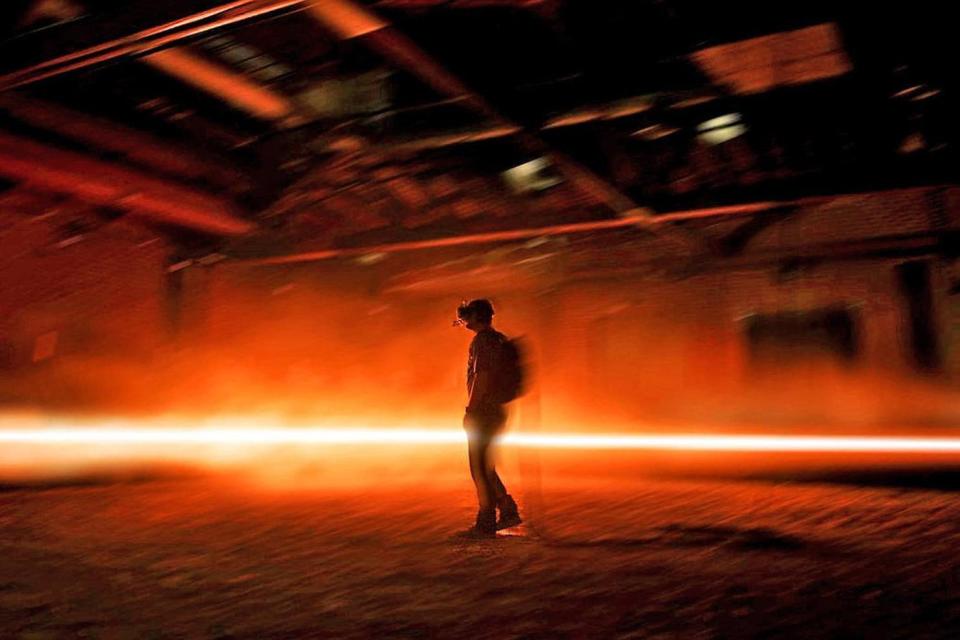Cannes 2017: Carne y Arena, film review – Hot ticket to the revolution

The hot ticket at Cannes this year has been not one of the films in the main competition, but the virtual reality installation Carne y Arena (Flesh and Sand), located in Cannes’s tiny airport Mandelieu, 15 minutes drive from the Croisette. The first ever VR show at the festival, it is a passionate presentation of the plight of illegal immigrants from the Mexican director Alejandro G Inarritu, staking the immersive experiences he created in Birdman and The Revenant to another level.
In one of the aerodrome’s hangers, a large space has been walled off, partly with genuine corrugated iron border fence from Arizona. On your own — so only a few people an hour can experience this — you take off your shoes and walk out onto sand. Assistants fit you with a backpack, trailing a wire, and an Oculus Rift headset. Suddenly you are in the Sonoran Desert between Mexico and the US, at dawn. Not only can you look around everywhere, you can move around too.
A ragged group of migrants, limping and exhausted, comes towards you, chivvied by a people-smuggler (“coyote”). As they reach you, a thunderous helicopter, shining a blinding light, arrives overhead. Humvees roar up and guards with machine guns and a scary dog jump out, shouting commands. And you are right in the midst of all this terror. Suddenly one of the guards notices you and takes aim, ordering you quite specifically to kneel ...
The VR show at Venice Film Festival last year, amateurishly acted scenes from the life of Christ, watched from a noddy chair, in fuzzy focus, was completely unconvincing. Carne y Arena, lasting some six minutes, acted by real migrants, using film shot by the great Emmanuel Lubezki, is on an entirely different level of technical delivery. You are there and you can move around — and even right through — these people at will.
The 3D effect is stunning. However, visual resolution is still not quite achieved: the faces are generic, the eyes don’t live. You feel alternately as though you are surrounded by ghosts and then again that it’s you who are a ghost in a real scene. It is eerie rather than entirely enveloping. You still have to choose to believe, to commit to the illusion; it’s like a strange hybrid of live theatre and a video game.
Moreover, although an emotional (and political) experience, it seems an inherently inartistic one. There’s no framing — you effectively edit your own version of the show. Nonetheless, this pioneering, revolutionary installation (moving next month to the Prada Foundation in Milan) is what this Cannes will be best remembered for — this glimpse of the future.

 Yahoo News
Yahoo News 